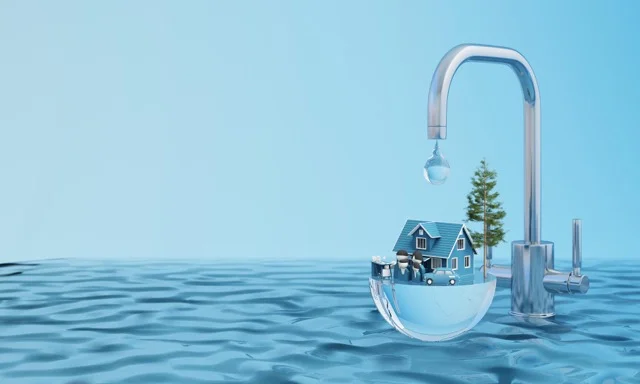Some Known Questions About Reclaim Waste.
Some Known Questions About Reclaim Waste.
Blog Article
The Ultimate Guide To Reclaim Waste
Table of ContentsReclaim Waste - An OverviewSome Known Factual Statements About Reclaim Waste The Single Strategy To Use For Reclaim WasteFacts About Reclaim Waste Uncovered8 Simple Techniques For Reclaim Waste
Domestic sewage waste refers to the waste and products from a residential septic tank. The proper monitoring and disposal of domestic sewer waste need liquid waste to be transferred to a sewer treatment plant where the proper methods and equipment are used to purify and dispose of waste.
Commercial waste often includes possible risks, such as combustible materials or a mixture of fluid and strong waste products, and calls for a much more innovative and comprehensive disposal process. The disposal of business waste usually entails the filtering of waste prior to transport to ensure safe and appropriate disposal. Industrial waste is produced from by-products and drainage of industrial procedures and production.
This sort of waste can not make use of the very same sewer monitoring transport or procedures as septic or business fluids. The commercial waste management procedure requires the inspection and testing of fluid waste prior to it goes through the disposal procedure (liquid waste removal melbourne). Runoff waste is the fluid waste that comes from overflow and excess stormwater in very booming areas or cities
Runoff waste can trigger contamination and flooding if not taken care of effectively. Ensuring appropriate waste management can stop catastrophes and lower ecological harm.
Reclaim Waste Things To Know Before You Buy
Contact PROS Providers today to find out about our waste monitoring and disposal solutions and the proper ways to take care of the fluid waste you produce.
(https://pxhere.com/en/photographer-me/4429814)Do you understand what happens to your water when you draw the plug, purge the toilet or drain the washing equipment? No? Well, it deserves recognizing. This supposed 'wastewater' is not just an essential resource but, after treatment, will be launched to our land, rivers or the sea. Utilized water from commodes, showers, bathrooms, kitchen sinks, washings and commercial procedures is called wastewater.

water utilized to cool down machinery or clean plant and equipment). Stormwater, a type of wastewater, is drainage that moves from farming and city locations such as roofs, parks, yards, roadways, paths and gutters into stormwater drains pipes, after rainfall. Stormwater flows without treatment straight to local creeks or rivers, ultimately getting to the sea.
Unknown Facts About Reclaim Waste
In Queensland, a lot of wastewater is dealt with at sewage therapy plants. Wastewater is transferred from domestic or commercial websites through a system of sewage systems and pump terminals, understood as sewerage reticulation, to a sewer therapy plant.
The Department of Natural Resources recommends city governments concerning managing, operating and maintaining sewage systems and therapy plants. In unsewered areas, local governments may need homeowners to mount private or family sewage therapy systems to deal with domestic wastewater from bathrooms, kitchen areas, washrooms and washings. The Division of Natural Resources authorizes using family systems when they are verified to be reliable.
In some brand-new neighborhoods, therapy of some stormwater to eliminate litter, sand and crushed rock has actually begun using gross toxin traps. Wastewater therapy occurs in 4 stages: Gets rid of solid issue.
Wastewater after that moves into big containers where solids resolve and are eliminated as sludge. Grease and scum are skimmed from the surface. Utilizes small living organisms called micro-organisms to damage down and get rid of remaining liquified wastes and great particles. Micro-organisms and wastes are included in the sludge. Removes nitrogen and phosphorus nutrients that might create algal blooms in our rivers and intimidate aquatic life.
See This Report about Reclaim Waste
Nutrient removal is not available at all sewer treatment plants since it requires pricey specialized devices. Clear liquid effluent generated after therapy may still contain disease-causing micro-organisms - liquid waste disposal.

This normally implies wastewater has actually to be dealt with or contaminants removed prior to it can find out here now be discharged to rivers. A lot of wastewater flows right into the sewerage system. Under the Act, neighborhood federal governments carry out authorizations and licences for eco appropriate tasks (Ages) involving wastewater launches that may have a local influence. The department carries out authorizations and licences to Periods involving wastewater launches that may have a local or statewide influence.
The Of Reclaim Waste
Otherwise, samples are taken for lab evaluation. Often many tests are needed to establish the levels of each of the different contaminants such as oils, hefty steels and chemicals in water. Surveillance gives factual information about water high quality and can verify that permit conditions are being fulfilled. The details obtained through tracking supplies the basis for making water high quality decisions.
Report this page